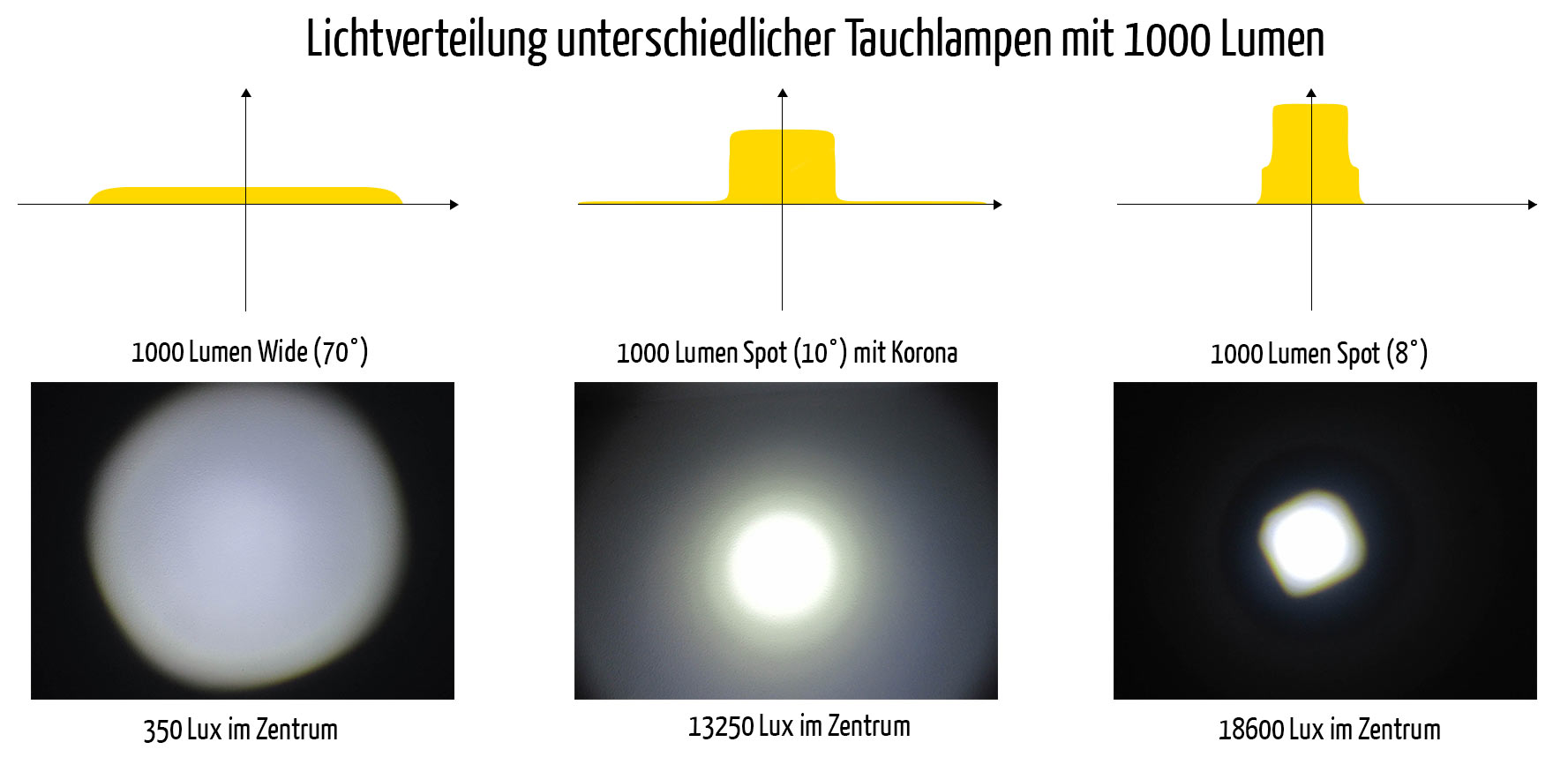
When looking at product specs, for example our Ledlenser MT18 Outdoor Torch, this bad boy has 3,000 lumens and can reach up to 1,800 feet! This light distribution comes down to patented technology and design that makes the flashlight both powerful (lumens), but also useful in helping see as far ahead as possible on your desired surfaces (lux). On the other hand, as pictured in the second image, the competitor torch on the right has a much wider ‘spill’ outside the main circle of light, proving that the targeted area isn’t as effectively covered. The Ledlenser torch is using 1000 lumens, however the competitor is using 2,500! Based on the clarity on the trees, it is clear that lumens only have a small part to play in creating a targeted light channel. These two light sources pictured above show our Ledlenser flashlight (left) and a competitor product (right) shining on trees. Instead, you want a product that uses a strong amount of lumens, but can also counterbalance it with a design and engineering that amplifies that light correctly. It’s important to note that more lumens do not necessarily translate to better results, so be wary of purchasing an item with ‘high lumens’ without getting a better understanding of how effective it will be. So, what does this mean when looking for the right product to serve your needs? At Ledlenser, all our products are designed with both Lumens and Lux in mind. In layman’s terms, you can have a lightbulb with 1000 lumens and while it may light up your living room, without containing that light towards a specific direction, the lux levels will be low and hard to serve their purpose at lighting a precise surface or area. The closer the object is to the light source, the higher the lux reading will be. It is the specific measurement of lumens per square meter, so essentially, lux will allow you to know how much light is hitting your surface. Lux on the other hand, measures how much light falls on a desired surface. Without any design or filtering, the light is hard to contain to just one specific direction. A light bulb can easily emit over 1000 lumens, but that light is sent in almost all directions. Lumens is the total amount of light emitted by a single light source, regardless of the direction it goes. So let’s go back to basics – what is the difference between Lumens and Lux? Why is it helpful to know and why should I consider this before making a purchase? Whether it’s understanding the difference between LED and luminosity, or lux vs lumens – it is important to be educated about the differences so you can have a successful shopping experience and receive a product that will serve you well in the long run. Many of us might walk into a gym and be completely baffled by similar terms, such as the difference between an overhead press and a bench press, and in the same way, if you’re looking to spruce up your light gear collection, there are quite a few terms that can be bewildering to first-time customers.

Purchasing your first heavy-duty torch or headlamp can be a perplexing experience.


 0 kommentar(er)
0 kommentar(er)
